Citibank 2013 Annual Report Download - page 55
Download and view the complete annual report
Please find page 55 of the 2013 Citibank annual report below. You can navigate through the pages in the report by either clicking on the pages listed below, or by using the keyword search tool below to find specific information within the annual report.-
 1
1 -
 2
2 -
 3
3 -
 4
4 -
 5
5 -
 6
6 -
 7
7 -
 8
8 -
 9
9 -
 10
10 -
 11
11 -
 12
12 -
 13
13 -
 14
14 -
 15
15 -
 16
16 -
 17
17 -
 18
18 -
 19
19 -
 20
20 -
 21
21 -
 22
22 -
 23
23 -
 24
24 -
 25
25 -
 26
26 -
 27
27 -
 28
28 -
 29
29 -
 30
30 -
 31
31 -
 32
32 -
 33
33 -
 34
34 -
 35
35 -
 36
36 -
 37
37 -
 38
38 -
 39
39 -
 40
40 -
 41
41 -
 42
42 -
 43
43 -
 44
44 -
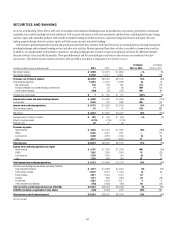 45
45 -
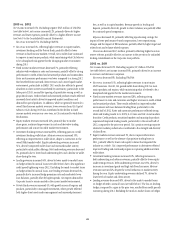 46
46 -
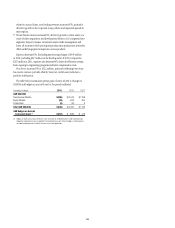 47
47 -
 48
48 -
 49
49 -
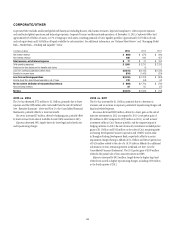 50
50 -
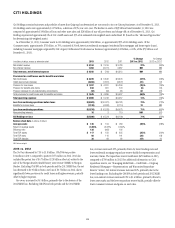 51
51 -
 52
52 -
 53
53 -
 54
54 -
 55
55 -
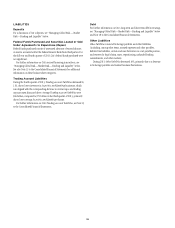 56
56 -
 57
57 -
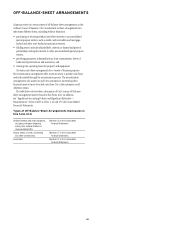 58
58 -
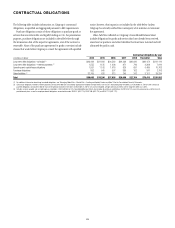 59
59 -
 60
60 -
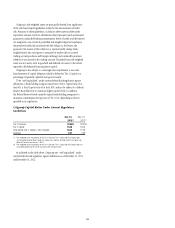 61
61 -
 62
62 -
 63
63 -
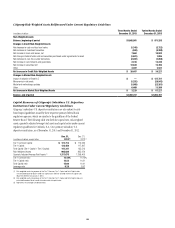 64
64 -
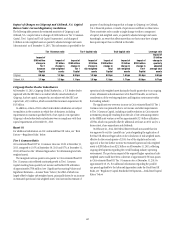 65
65 -
 66
66 -
 67
67 -
 68
68 -
 69
69 -
 70
70 -
 71
71 -
 72
72 -
 73
73 -
 74
74 -
 75
75 -
 76
76 -
 77
77 -
 78
78 -
 79
79 -
 80
80 -
 81
81 -
 82
82 -
 83
83 -
 84
84 -
 85
85 -
 86
86 -
 87
87 -
 88
88 -
 89
89 -
 90
90 -
 91
91 -
 92
92 -
 93
93 -
 94
94 -
 95
95 -
 96
96 -
 97
97 -
 98
98 -
 99
99 -
 100
100 -
 101
101 -
 102
102 -
 103
103 -
 104
104 -
 105
105 -
 106
106 -
 107
107 -
 108
108 -
 109
109 -
 110
110 -
 111
111 -
 112
112 -
 113
113 -
 114
114 -
 115
115 -
 116
116 -
 117
117 -
 118
118 -
 119
119 -
 120
120 -
 121
121 -
 122
122 -
 123
123 -
 124
124 -
 125
125 -
 126
126 -
 127
127 -
 128
128 -
 129
129 -
 130
130 -
 131
131 -
 132
132 -
 133
133 -
 134
134 -
 135
135 -
 136
136 -
 137
137 -
 138
138 -
 139
139 -
 140
140 -
 141
141 -
 142
142 -
 143
143 -
 144
144 -
 145
145 -
 146
146 -
 147
147 -
 148
148 -
 149
149 -
 150
150 -
 151
151 -
 152
152 -
 153
153 -
 154
154 -
 155
155 -
 156
156 -
 157
157 -
 158
158 -
 159
159 -
 160
160 -
 161
161 -
 162
162 -
 163
163 -
 164
164 -
 165
165 -
 166
166 -
 167
167 -
 168
168 -
 169
169 -
 170
170 -
 171
171 -
 172
172 -
 173
173 -
 174
174 -
 175
175 -
 176
176 -
 177
177 -
 178
178 -
 179
179 -
 180
180 -
 181
181 -
 182
182 -
 183
183 -
 184
184 -
 185
185 -
 186
186 -
 187
187 -
 188
188 -
 189
189 -
 190
190 -
 191
191 -
 192
192 -
 193
193 -
 194
194 -
 195
195 -
 196
196 -
 197
197 -
 198
198 -
 199
199 -
 200
200 -
 201
201 -
 202
202 -
 203
203 -
 204
204 -
 205
205 -
 206
206 -
 207
207 -
 208
208 -
 209
209 -
 210
210 -
 211
211 -
 212
212 -
 213
213 -
 214
214 -
 215
215 -
 216
216 -
 217
217 -
 218
218 -
 219
219 -
 220
220 -
 221
221 -
 222
222 -
 223
223 -
 224
224 -
 225
225 -
 226
226 -
 227
227 -
 228
228 -
 229
229 -
 230
230 -
 231
231 -
 232
232 -
 233
233 -
 234
234 -
 235
235 -
 236
236 -
 237
237 -
 238
238 -
 239
239 -
 240
240 -
 241
241 -
 242
242 -
 243
243 -
 244
244 -
 245
245 -
 246
246 -
 247
247 -
 248
248 -
 249
249 -
 250
250 -
 251
251 -
 252
252 -
 253
253 -
 254
254 -
 255
255 -
 256
256 -
 257
257 -
 258
258 -
 259
259 -
 260
260 -
 261
261 -
 262
262 -
 263
263 -
 264
264 -
 265
265 -
 266
266 -
 267
267 -
 268
268 -
 269
269 -
 270
270 -
 271
271 -
 272
272 -
 273
273 -
 274
274 -
 275
275 -
 276
276 -
 277
277 -
 278
278 -
 279
279 -
 280
280 -
 281
281 -
 282
282 -
 283
283 -
 284
284 -
 285
285 -
 286
286 -
 287
287 -
 288
288 -
 289
289 -
 290
290 -
 291
291 -
 292
292 -
 293
293 -
 294
294 -
 295
295 -
 296
296 -
 297
297 -
 298
298 -
 299
299 -
 300
300 -
 301
301 -
 302
302 -
 303
303 -
 304
304 -
 305
305 -
 306
306 -
 307
307 -
 308
308 -
 309
309 -
 310
310 -
 311
311 -
 312
312 -
 313
313 -
 314
314 -
 315
315 -
 316
316 -
 317
317 -
 318
318 -
 319
319 -
 320
320 -
 321
321 -
 322
322 -
 323
323 -
 324
324 -
 325
325 -
 326
326 -
 327
327 -
 328
328 -
 329
329 -
 330
330 -
 331
331 -
 332
332 -
 333
333 -
 334
334 -
 335
335 -
 336
336 -
 337
337 -
 338
338 -
 339
339 -
 340
340 -
 341
341 -
 342
342
 |
 |
37
Trading Account Assets
Trading account assets declined during the second half of 2013 due to
declines in client activity in Rates and Currencies in the Markets businesses
within Securities and Banking, as referenced above. Average trading
account assets were $239 billion in the fourth quarter of 2013, compared to
$246 billion in the third quarter of 2013.
For further information on Citi’s trading account assets, see Note 13 to the
Consolidated Financial Statements.
Investments
Investments generally remained stable during 2013, as a slight increase in
foreign government securities was offset by declines in mortgage-backed
securities to reduce the interest rate risk profile and U.S. Treasury and
agency securities.
For further information regarding investments, see Note 14 to the
Consolidated Financial Statements.
Loans
Loans represent the largest asset category of Citi’s balance sheet. Citi’s
total loans, net of unearned income, were $665 billion at December 31,
2013, compared to $658 billion at September 30, 2013 and $655 billion at
December 31, 2012. The impact of foreign exchange translation reduced loan
balances by $8 billion year-over-year and by $1 billion quarter-over-quarter.
Additionally, approximately $3 billion of loans were moved to Discontinued
operations during the second quarter of 2013 as a result of the agreement to
sell Credicard. Throughout this section, the discussion of loans excludes the
impact of foreign exchange translation, and excludes Credicard loans for the
fourth quarter of 2012 and the third quarter of 2013.
Excluding these items, Citi’s loans increased 3% from the prior-year period
and 1% quarter-over-quarter, as demand from consumer and corporate
customers continued to be supported by the economic recovery, partially
offset by the continued wind down of Citi Holdings. At year-end 2013,
Consumer and Corporate loans represented 59% and 41%, respectively, of
Citi’s total loans.
Citicorp loans increased 8% year-over-year, with growth in both the
Consumer and Corporate loan portfolios. Consumer loans grew 5% from
the prior-year period. In North America, Consumer loans grew 4% from
the prior-year period, primarily reflecting the addition of the approximately
$7 billion of credit card loans as a result of the acquisition of the Best Buy
portfolio in the third quarter of 2013. Internationally, Consumer loans
increased 7% from the prior-year period, led by growth in Mexico, Hong Kong
and India, offset by the ongoing repositioning efforts in Korea.
Corporate loans grew 12% from the prior-year period, with 12% growth
in Asia, 7% growth in EMEA and 17% growth in North America, which
included the consolidation of a $7 billion trade loan portfolio in Transaction
Services during the second quarter of 2013. Private Bank loans increased 14%
year-over-year, with the most significant growth in Asia and North America.
Transaction Services loans grew 16% compared to the prior-year period,
including the trade loan consolidation as well as origination growth in trade
finance throughout the year. Corporate loans, excluding trade loans, grew
10% from the prior-year period.
Citi Holdings loans declined 20% year-over-year, primarily due to
continued run-off and asset sales.
During the fourth quarter of 2013, average loans of $659 billion yielded
an average rate of 7.0%, compared to $645 billion and 7.0% respectively, in
the third quarter of 2013.
For further information on Citi’s loan portfolios, see generally “Managing
Global Risk—Market Risk—Funding and Liquidity” below and Note 15 to
the Consolidated Financial Statements.
Other Assets
Other assets consist of brokerage receivables, goodwill, intangibles and
mortgage servicing rights, in addition to other assets (including, among
other items, loans held-for-sale, deferred tax assets, equity-method
investments, interest and fees receivable, premises and equipment, certain
end-user derivatives in a net receivable position, repossessed assets and
other receivables).
During the fourth quarter of 2013, other assets decreased 2% primarily
due to the sale of Credicard, which was reported in Discontinued operations.
Year-over-year, other assets declined 9% primarily due to a reduction in Citi’s
deferred tax assets and loans held-for-sale as well as FX translation.
